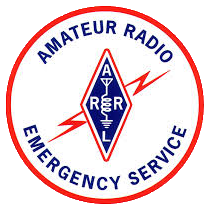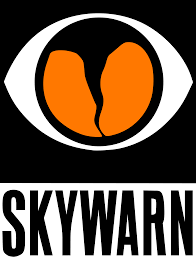Best Power Practices II
- Details
- Published: 18 June 2020
In Best Power Practices I we discussed a variety of issues related to properly powering your gear. We covered the need for dedicated power wiring as well as the desirability of using standard connectors.
Power Wire Gauge
We previously discussed the need to utilize wire of the proper gauge for feeding power to our radios, and also the fact that conventional vehicles do not have wiring from the factory capable of carrying the current required for a typical mobile amateur radio. Utilizing that wiring will likely result in damage to the wiring over time.
So, you've decided to properly power your rig with dedicated wiring for your gear. But what kind? Certainly you want to use stranded wire in a mobile rig, as solid wire eventually suffers from the vibration of the vehicle and will become damaged over time. Stranded wire is also more flexible and tolerate of being routed through the vehicle. The insulation type is important, particularly in automotive applications, where temperatures (even in the cabin) can be quite high. Cross-Linked polyethylene (XLP), and Polyvinyl Chloride (PVC) will do the job, but plain polyethylene will break down at temperatures in the cabin, much less in the engine compartment.
Power Connectors
- Details
- Published: 16 November 2018
One of the interesting things about Amateur Radio is the nearly universal use of PL-259 connectors for base and mobile radio gear, at least that at or below the UHF end of the frequency spectrum. We typically utilize 50ohm cable, even if there are variations of loss across the frequency spectrum, diameter, etc.
One area we see very little standardization, especially across brands, is power connections. Almost all mobile and base gear runs off 12 volts, yet there are a multitude of connectors, having little more than the red for hot and black for ground color coding.
In addition, we will connect that equipment to a variety of sources, some making it obvious which connector is hot and which connector is ground. Others, like car batteries, often require a close look. Also, in some instances the wires are always properly color coded.
Because of these variables we can almost be certain, that if we tinker, change, or rearrange our radio gear very much, we WILL accidentally hook the wires up wrong and let the smoke out of some valuable piece of radio gear.
There are a number of ways to minimize, even virtually eliminate, this hazard. First, ALWAYS using color coded wire is a big plus. Red for hot, Black for ground. Make sure any power sources are similarly color coded, even if that means painting some nail polish on or around a the post of a power supply or battery.
Cross-Band Repeating
- Details
- Published: 08 February 2019
Cross-Band repeating has great potential for use in EMCOMM, extending our ability to utilize handhelds as well as providing gateways to more distant repeaters.
First, a quick explanation of what cross-band repeating is: the use of radio equipment that can simultaneously transmit on one frequency what is received on the other, much as a normal repeater. The twist is that the two frequencies will be on different bands, usually 2M and 70cm. The reason for this, is the significant difference in frequencies allows the simultaneous transmit and receive with simple circuits, rather than large and bulky duplexors required for same-band repeating.
Many in our group, who can't directly reach the repeater with an HT, utilize cross-band repeat capability. To cross-band, merely run an HT in simplex on an appropriate 440Mhz frequency and on your mobile or base station set one VFO to the same simplex frequency as your HT and operate the other VFO as normally for the repeater. When the radio is in cross-band mode it will transmit everything that comes in on the repeater output to the 440Mhz frequency, and repeat everything from the 440Mhz frequency to the repeater. Your HT now has the same range as your base or mobile rig!
Best Power Practices I
- Details
- Published: 11 June 2020
Operating a mobile rig in a motor vehicle or as a base can create some interesting challenges, and while many installations may work, they may be optimal, and could potentially damage your radio or automobile. We’ll break things down into a few different topics.
Connecting Vehicle Power
Most motor vehicles are not really wired for an accessory that draws the current a typical mobile amateur radio will. Still, many of us have (or do) run our radio using the “Accessory” or “Cigarette Lighter” jack. That jack is typically rated for 10 amps, and for intermittent usage. A conventional amateur radio with 50 Watts of output will consume 11 amps or more. At best, you are maxing out usage, at worst exceeding capacity. Additionally, the adapter connection does not provide a solid ground or hot connection, often increasing current draw. There is little other wiring in the car that can handle that load either.
So, if you’re at or above capacity, why doesn’t the fuse blow? Because fuses require an excess of current for some sustained period of time. Even though the fuse isn’t blowing, the wiring is getting hot, and the insulation will eventually begin to break down.
Running power specifically for your radio is the best practice.
Roll-Up VHF/UHF Antennas
- Details
- Published: 31 May 2018
Emergency Communications deployment has similarities to camping and backpacking trips, where you need to pack everything you need with you without overloading yourself. Striking the proper balance is challenging, because no matter how hard you try you will usually find something you should have packed and something you should have left behind, because we never know what the requirements of the deployed location will be.
It's safe to say that one item likely to be on any deployment list is some form of enhanced antenna to improve the ability to reach out to distant repeaters, or even function as an ad-hoc cross-band repeater.
Arrow makes a great dual band J-pole that breaks down to be pretty portable, but requires a pole to be mounted to, as is the case with most commercial antennas. It's possible to bring a tripod along, or some type of mount that can be attached to your vehicle, but that may require your deployment be restricted to a parking lot or your vehicle. Sometimes that will be the case by necessity, but it does isolate you from your served agency members.






